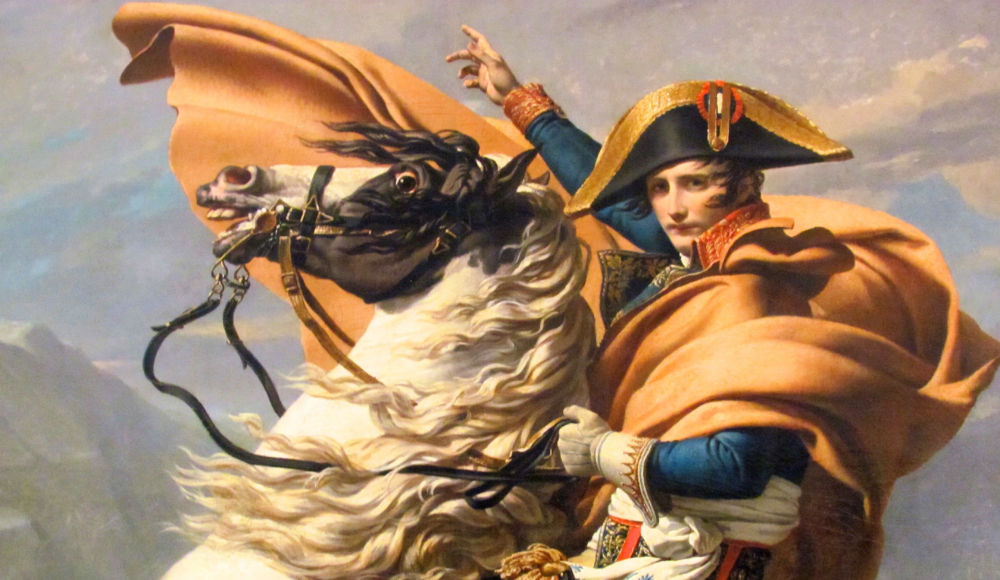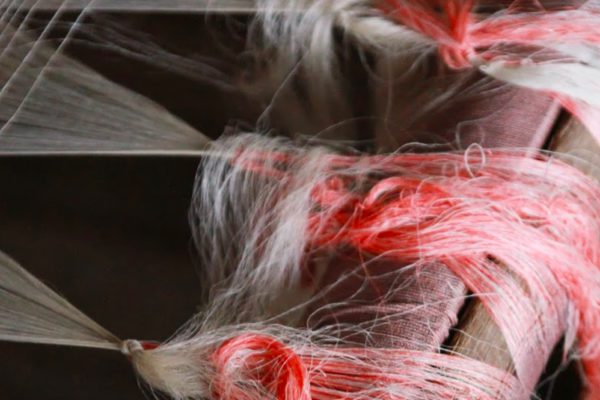
Page 72 of Andrew Roberts’ new biography of Napoleon paints a compelling picture of ignorance in action.
Napoleon has just been made a general while still a few months shy of his twenty-seventh birthday. Roberts quotes a fellow officer observing him as he prepares frantically for his first campaign, in Italy:
I happened to be at the office of the General Staff in the Rue Neuve des Capucines when General Bonaparte came in. I can still see the little hat, surmounted by a pickup plume, his coat cut anyhow, and a sword which, in truth, did not seem the sort of weapon to make anyone’s fortune. Flinging his hat on a large table in the middle of the room, he went up to an old general named Krieg, a man with a wonderful knowledge of detail and the author of a very good soliders’ manual. He made him take a seat beside him at the table, and began questioning him, pen in hand, about a host of facts connected with the service and discipline. Some of his questions showed such a complete ignorance of the most ordinary things that several of my comrades smiled. I was myself struck by the number of his questions, their order and their rapidity, no less than the way by which the answers were caught up, and often found to resolve into other questions which he deduced in consequence from them. But what struck me still more was the right of a commander-in-chief perfectly indifferent about showing his subordinates how completely ignorant he was of various points of a business which the youngest of them was supposed to know perfectly, and this raised him a thousand cubits in my opinion.
One of my strengths at the beginning of my career was recognizing how ignorant I was about any number of very basic things. I saw clearly that I needed to start from chapter one to understand how a given business or part of a business really worked – for example, what kinds of people work in a supply chain function, what they do, and how those activities fit together.
Twenty years later, I now find myself in danger of finding too many things just familiar enough to seem like they make sense. This could become a terrible weakness if it displaces the thirst to grasp, down to the level of vivid everyday detail, how things work today and the many, many variations of how they could work otherwise.
Napoleon’s career shows us what’s at stake. William Duggan, who teaches Napoleon’s Glance, one of the most-loved courses at Columbia Business School, brings Napoleon’s way of thinking to life in his book Strategic Intuition. Duggan begins by recounting a scene from Abel Gance’s silent film Napoleon:
The scene takes place during the siege of Toulon in September 1783. Toulon was the French navy’s most important port on the southern coast. The British invade and take it. The army of the French Revolution surrounds the city and prepares a counterattack. Napoleon is twenty-four years old at the time. He arrives in Toulon and reports for duty.
The scene begins when Napoleon comes through a doorway and steps inside a spacious country café. He wears a simple black uniform and his famous hat with the crown like an upturned boat – it was standard issue for officers of the day. Under one arm he carries a thick book. He pauses to look around. The café is filled with soldiers in uniform lounging and drinking. There are politicians in fancy dress and dandy hats and all sorts of hangers-on from the countryside. A French general sits at the center of a long table. There is no sign of military discipline. Napoleon strides over to the general. He salutes, hands the general his orders, and stands stiff at attention.
Napoleon’s orders post him as second-in-command of the siege artillery. The general looks at the paper and scoffs. They don’t need artillery: “We shall take Toulon with the sword and bayonet!” Napoleon gives the hint of a smile, salutes, and turns to go. The general catches his arm and asks, “If you were in my place, little man, what would you do?” Another soldier brings a map and spreads it out on the table before the general.
Napoleon looks down at the map of Toulon for a moment and then looks off into the distance. The filmmaker shows what Napoleon sees in his mind as a swirl of activity on the map. Then Napoleon blinks as if coming out of a trance. He places a finger on the map and says, “Once the fort of l’Aiguilette is taken the English will abandon the town.”
The general explodes with laughter along with everyone else. But Napoleon just stands still with his face calm. The laughter dies down, and it becomes clear that with a single coup d’oeil [“strike of the eye”] Napoleon has won everyone’s allegiance away from the general.
…. As it turns out, the general went ahead with his plan. It failed miserably. Paris fired him. The next general listened to Napoleon and took the little fort instead. Napoleon’s idea worked. His career took off from there.
The scene in Gance’s film is remarkably accurate, except for one thing: we know that Napoleon’s coup d’oeil did not take place on command like that, in reply to the general’s request. Napoleon put his strategy together over several days and talked with other junior officers about it. Military historians know the elements that Napoleon put together to make his winning idea: contour maps, plus the light cannon, plus the American Revolutionary War, plus Joan of Arc….
First come contour maps. Napoleon did not invent them – they dated from about a hundred years before – but he was one of the first officers to use them for every battle. On the contour map of Toulon he noticed a small fort, l’Aiguilette, on a cliff overlooking the harbor. Second comes the light cannon. Napoleon did not invent that either – it dated from about ten years before. Unlike the heavy cannon that had defended castles for centuries the new cannon was light enough for animals or humans to roll just about anywhere – even up a cliff…
The third element of Napoleon’s strategy came from the American Revolutionary War. At the siege of Boston Henry Knox had the idea to drag cannons up Dorchester Heights to command the harbor. The British in the town were suddenly afraid of being cut off from their navy. So they got on their ships and sailed away. That was 1776. In 1781 the same thing happened at the siege in Yorktown: the French navy cut off the British troops in town from the British navy at sea. The British surrendered to General George Washington. That ended the war, and from then on the British army was terrified of being cut off from its navy. Toulon came twelve years after Yorktown.
The fourth element of Napoleon’s Toulon strategy was the siege of Orléans, in 1429, when Joan of Arc saved France from conquest by England. She relieved the fortress of Orléans indirectly, by taking smaller forts around the city instead of fighting over the main fortress itself.
At Toulon these four elements came together in Napoleon’s mind. The contour maps showed him l’Aiguilette, a small fort around the main fortress, as at Orléans. Light cannon hauled up there could command the harbor and cut off the British army from its navy, as at Boston and Yorktown…. Napoleon had never fought a battle like Toulon, but he was able to find on the shelves of his mind a set of elements that solved in previous battles different pieces of the Toulon problem. The combination was new, but the elements that made up the combination were not.
For Napoleon to have those elements in his mind with the vividness and the granularity to be able to use them, he had to be powerfully curious. He had to be dissatisfied with a superficial view of the examples from history he studied, always asking more questions about how they worked and how they might work in other circumstances. He had to confront again, again and again the sheer magnitude of his not knowing and hungrily ask questions to piece together the elements that he might need to recombine to overcome the problems ahead.
Most of us too quickly become convinced we understand things, and fall deeper and deeper into this trap as we become more expert. Praise from others who find our understanding helpful only deepens the trap, creating the false feeling of sufficient knowledge. Producing an insight is different from producing a solution, and the latter demands a richness of understanding that many times the former does not. People like me who touch lots of businesses with which we engage at a high level, who have strong incentives to generate insights quickly and whose minds grasp patterns easily and readily (which isn’t to say those patterns are necessarily right!) are perhaps the most susceptible to this trap.
Napoleon shows us the way out. Trying to achieve anything of importance through knowledge, competence or expertise is like taking Toulon by sword and bayonet: attractive in contemplation, impossibly bloody in the thick of war. Admitting ignorance and working through question after question to chip away at that ignorance is the way to the small fort that overlooks the harbor, the only place from which the winning battle can be fought.



